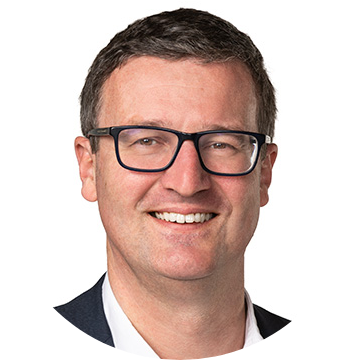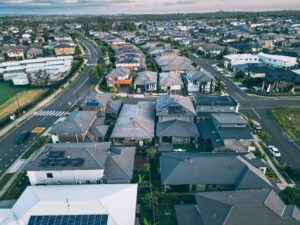Highfield Resources (ASX:HFR) finally makes it to the big time

Highfield Resources could be a Unicorn in the making
It was a long time in coming. Highfield Resources (ASX:HFR) started working on its Muga Potash Project in northern Spain in 2012. However, it has only been in the last 3 years that the project has got fully permitted, funded and ready for construction. Last month Highfield was able to announce that Yankuang, the major Chinese miner behind the setup of Yancoal Australia, together with some other Chinese investors, would put in the last US$220m to get Muga up and running.
Not only that, but Yankuang would also transfer to Highfield a large but as-yet-undeveloped potash project in Canada called Southey. The result, once the necessary foreign investment approvals are received, will be a major new potash company globally, with valuable multi-decade mines. As yet, Highfield Resources stock has barely moved on that ‘company-making’ news. We think there’s potentially a unicorn in the making.
What is potash?
Let’s start with the commodity. Potash is a fertiliser mineral. Plants need nitrogen, phosphorus and potassium in order to grow, and potash is the mineral from which we get fertiliser-grade potassium. Potash is a great commodity to be invested in if your focus is the long term. The world’s population continues to grow and living standards are improving across the globe. That means people are eating more and better food, which in turn raises the need for more fertiliser to grow crops, particularly potash fertilisers where you get better crop yields and less depletion of soil fertility.
No wonder, then, that potash demand routinely goes up 2-3% per year. On the supply side, getting a new potash mine up and running can be hideously expensive and time consuming. Just ask BHP. Back in 2010 that company tried to buy Potash Corporation of Saskatchewan, a major potash producer, but got knocked back. BHP decided to develop its own mine instead. 14 years later and Jansen Stage 1 in Saskatchewan is only about half way complete. And the two stages will cost about US$10bn in total!
The next running of the bulls
Now throw in an additional factor. Up until recently the world got a lot of its potash from two countries many other countries would rather not do business with. Russia and Belarus combined provided around 40% of global potash exports in 2020. The restriction of that trade after the Russian invasion of Ukraine in 2022 highlighted the need for more potash from Tier 1 jurisdictions, like Canada and Spain, where Highfield had its would-be company maker, Muga.
Muga is located around 50 km southeast of Pamplona, the capital of Spain’s Navarra province famous for its annual ‘running of the bulls’ every July. The Ebro Basin in this part of Spain historically had potash mines and the tenements that Highfield holds cover an old potash mine called Subiza, which was a significant producer from 1977 to 1996. Highfield’s instincts when it started work in Navarra in 2012 was that the higher potash prices of the 2010s, combined with the near-surface nature of the potash resources here, the nearby infrastructure, the favourable Spanish labour rates and the proximity to ports would make for an economically compelling project.
The most recent Nov 2023 Feasibility Study proves that instinct to be correct. This study envisaged a mine producing 1 million tonnes of potash annually over a 30 year mine life. The NPV of this operation at an 8% discount rate came in at a cool €1.82bn. To get there, however, would require €449m in capital costs for phase 1.
Location, location, location
One of the reasons Muga finally made it, in terms of attracting the requisite funding, was that it is a demonstrably high-margin operation. Highfield Resources intends to mine Muga by conventional room-and-pillar underground methods and has proposed a conventional flowsheet involving froth flotation. That has meant that the C1 costs of the mine (that is, direct costs, without shipping or overhead costs) are only €108 per tonne, compared to a selling price for Muriate of Potash (MoP) of €436 per tonne. The current plan is to start with the 500,000 tonnes in Phase 1 and then spend another €286m to double the capacity to 1 million tonnes a year.
The main attraction of investors to Muga is the location – it’s only a couple of hours drive northwest to the Port of Bilbao, making it super-fast to get product to export markets, particularly Brazil, a strong importer of potash. Even more importantly, it is located in a major European market for fertilisers, namely, the south of France and northern Spain.
The pieces of the funding puzzle are falling into place
Which brings us to the current transaction. By last month Highfield Resources had managed to raise most of the debt funding it needed, but it was still short. Yankuang and other investors now close that gap with US$220m in equity funding. Highfield currently trades at around 30 cents per share on ASX, but Yankuang and the other Chinese investors will take their equity at 50 cents per share. The same price will be used for the shares that will be issued when the US$286m value for Southey is transferred. Yankuang ends up as the majority shareholder and a new, viable potash company is created with, potentially, the financial strength to grow into a major player such as K+S AG with its €3.5-4bn in annual revenue, built originally off potash mines scattered across Germany’s heartland.
Hello Hong Kong
Yankuang is a Chinese state-controlled group of companies mostly involved in coal mining. Australian investors will be familiar with the name because of its ASX-listed subsidiary, Yancoal Australia (ASX: YAL), majority-owned by the Hong Kong-traded Yankuang Energy Group (SEHK: 1171) and also publicly traded in Hong Kong (SEHK: 3668).
Some of Yankuang’s mines, such as Zhuanlongwan in Inner Mongolia with its 10 million tonne per annum capacity, are monsters. Coal, however, has likely peaked as a source of energy globally, so even major producers like Yankuang are thinking about diversifying. Potash is an obvious commodity to move into and the way in which investors have back stocks like Yancoal suggest that they will back the new Highfield Resources as well. Like Yancoal Australia, Highfield Resources will consider a Hong Kong listing.
A Canadian monster
With Southey, the Yankuang folks have done their homework on potash. That project could turn out to be another monster. Southey is about 60 km north of the Saskatchewan capital of Regina, in the same neighbourhood as Nutrien (the old PotashCorp) and Jansen. Seven years ago, Yankuang was publicly talking about a 2.8 million tonnes per annum potash solution mine at Southey that would cost around C$3bn to build.
It will be a few months until the new Highfield Resources is put together because regulators in China as well as Canada, Spain and Australia have to approve it – Canada because of the Southey asset transfer involving a foreign investor, Australia because Highfield is an Australian company that will become majority Chinese-controlled, and Spain for obvious reasons.
What’s the catch?
So, if these projects are so great, why is the HFR share price lingering? Possibly investors are worried about these required approvals given recent antagonism between Western countries on the one hand and China on the other over trade as well as other matters. Balanced against this is Yancoal’s track record of being a good corporate citizen in Australia and the advantages to Spain of a new potash mine.
Highfield Resources’ fundamentals have substantially improved from just a few years ago. And because the payoff is potentially very large, we believe investors should put Highfield Resources, or rather ‘Highfield 2.0’, on their watch lists ahead of the outcome on these approvals and the requisite shareholder votes!
What are the Best ASX Resources Stocks to invest in right now?
Check our buy/sell tips

Blog Categories
Get Our Top 5 ASX Stocks for FY26
Recent Posts
Diversifying Portfolios with ASX Consumer Stocks: Opportunities and Risks
The ASX 200 has delivered significant volatility recently, and market participants observing the screens in 2025 understand the turbulence firsthand.…
Is Lendlease (ASX:LLC) out of the doldrums for good?
Lendlease (ASX:LLC) has for the past several years been the classic definition of a ‘value trap’. You think a good…
Here are the 2 most important stock market taxes that investors need to be aware on
As one of two certainties in life, investors need to be aware of stock market taxes. Investors may be liable…


